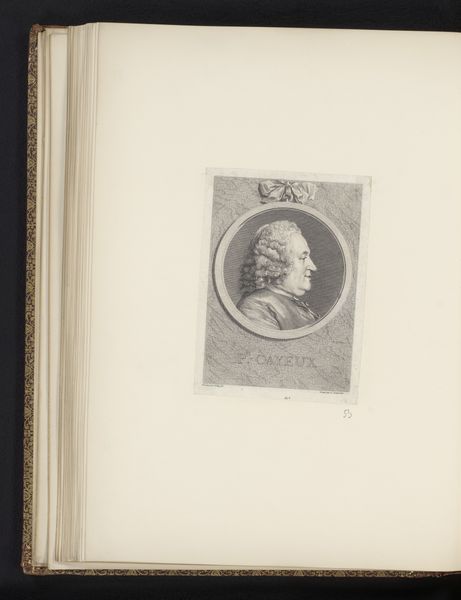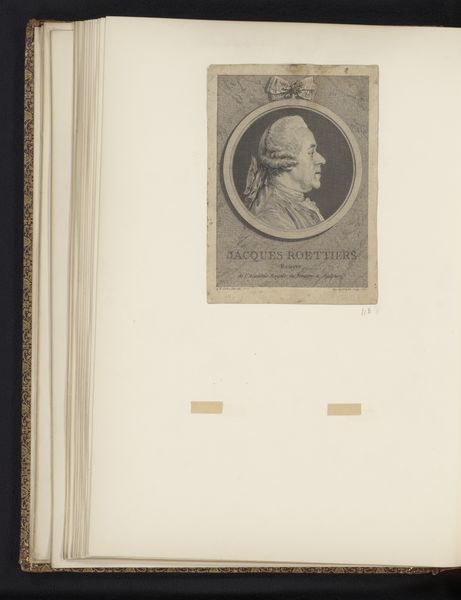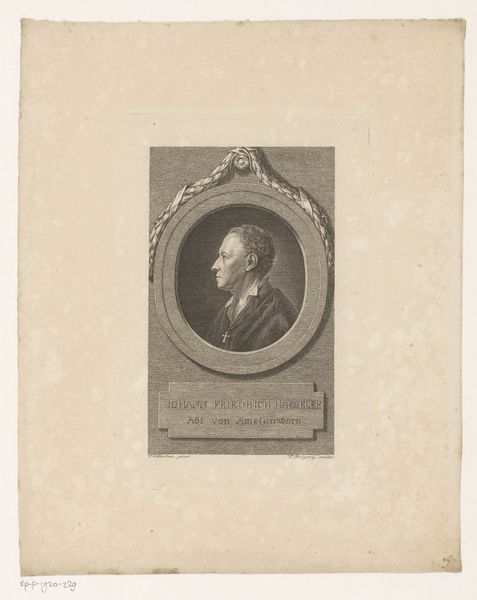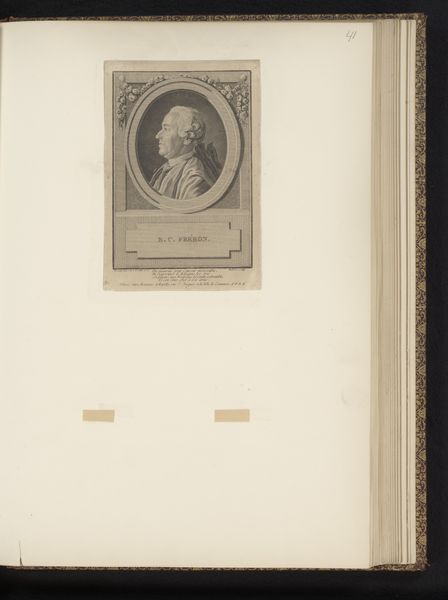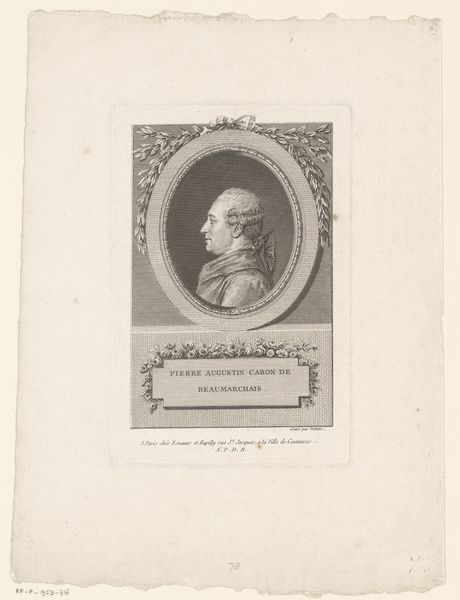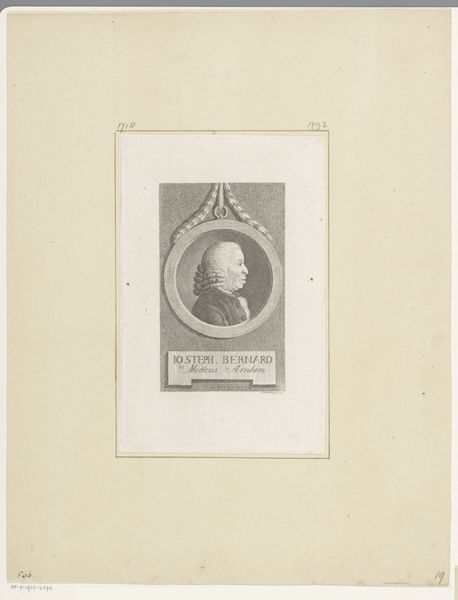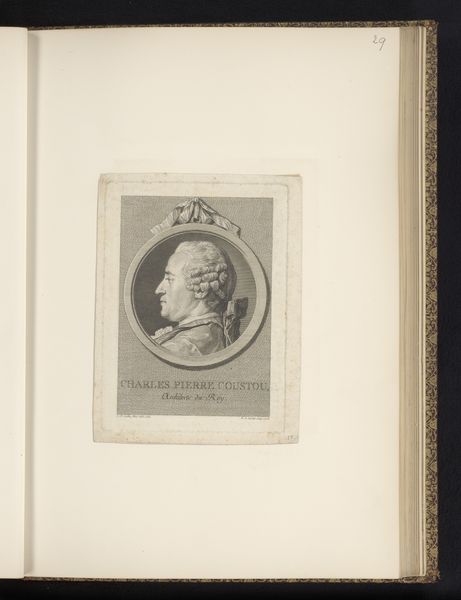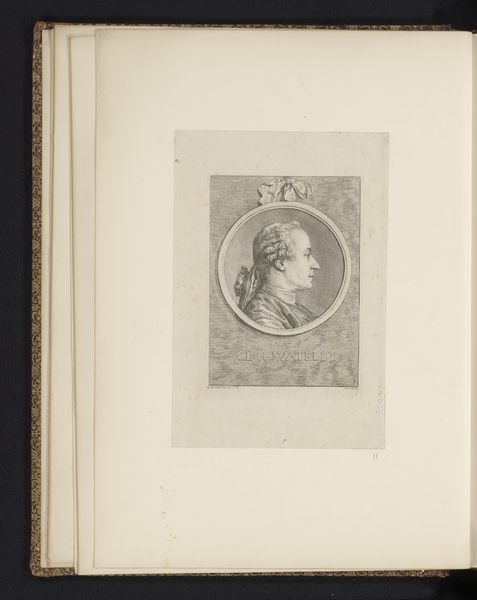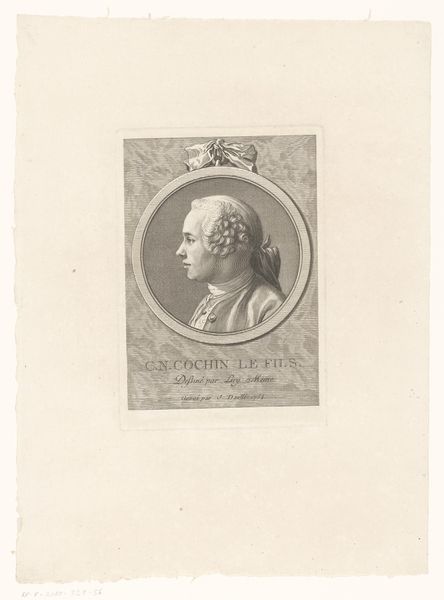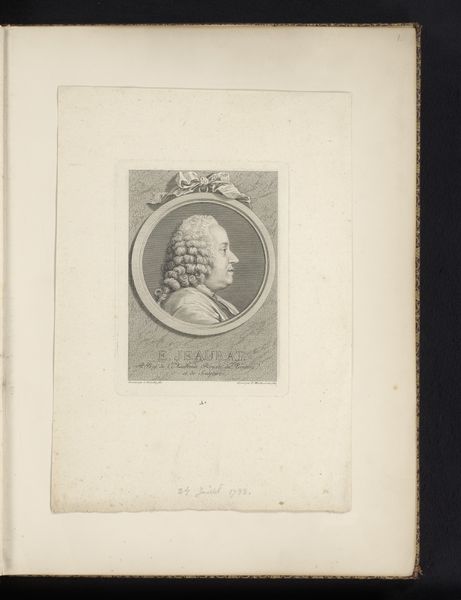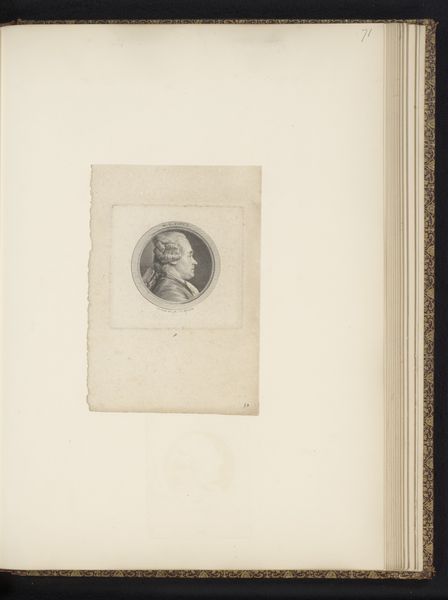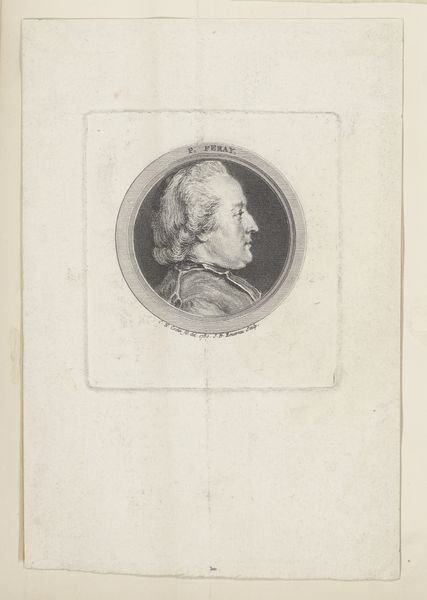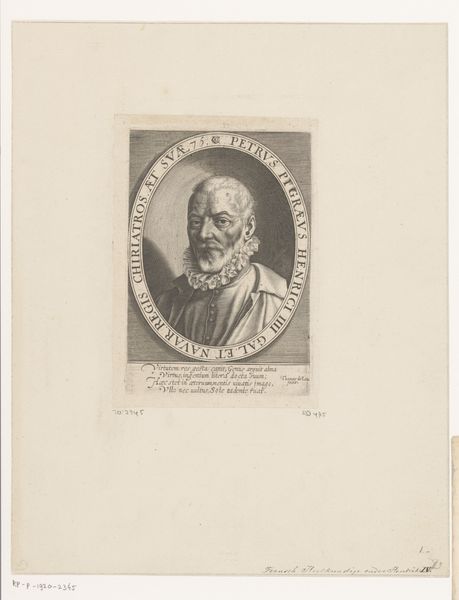
graphic-art, print, intaglio, paper, engraving
#
portrait
#
graphic-art
#
baroque
# print
#
intaglio
#
figuration
#
paper
#
line
#
academic-art
#
engraving
#
rococo
Dimensions: height 195 mm, width 132 mm
Copyright: Rijks Museum: Open Domain
Curator: Here we have Jean Daulle’s 1754 engraving, "Portrait of Charles Nicolas Cochin II," currently held at the Rijksmuseum. It’s a striking example of Baroque portraiture rendered through intaglio on paper. What are your initial thoughts? Editor: It seems a very precise, almost clinical depiction. The lines are so clean; you can practically feel the cool touch of the metal plate on the paper itself. There’s something stark, yet refined about the overall effect, despite its ornamental period style. Curator: Absolutely. Daulle has employed line and texture to construct Cochin’s likeness. Note the composition—the oval cartouche and the careful attention to depicting textures, fabrics and of course the sitter's powdered wig. The visual clarity establishes Cochin's social position. Editor: Indeed. And consider the labor invested in creating this image. The engraving process—the physical act of carving the lines, the layering of ink, the pressure of the press. Each impression becomes a multiple, accessible to a wider audience than a painted portrait. It suggests a certain democratization of image-making, even if it's still catering to the elite. Curator: That's a pertinent point. It shifts the idea of portraiture away from singular masterpieces towards reproductive print culture, disseminating images throughout society. Semiotics, in this image, becomes a play between what is portrayed, how, and how its distribution affects meaning. The paper itself serves as both ground and structural component of the image. Editor: I find myself drawn to the social dynamics inherent in such a work. The skilled engraver, the aristocratic subject, the patrons who facilitated its production – all interconnected through labor and capital. It compels us to consider how images perpetuate and reflect specific power structures. Curator: Precisely. Daulle's meticulous technique and deployment of baroque sensibilities underscores the formal structures of status and power, mirroring those structures within the aesthetic arrangement. Editor: In its totality, it represents the period, as an artistic creation and material product, that reflects production and artistic ingenuity of its time. Curator: Very well observed. I find that the work, in its subtle design, also brings new perspective to academic artwork as a statement on the construction and role of identity in that period. Editor: And seeing it within its socio-economic context helps reveal so much about art history beyond just style. Thank you.
Comments
No comments
Be the first to comment and join the conversation on the ultimate creative platform.
